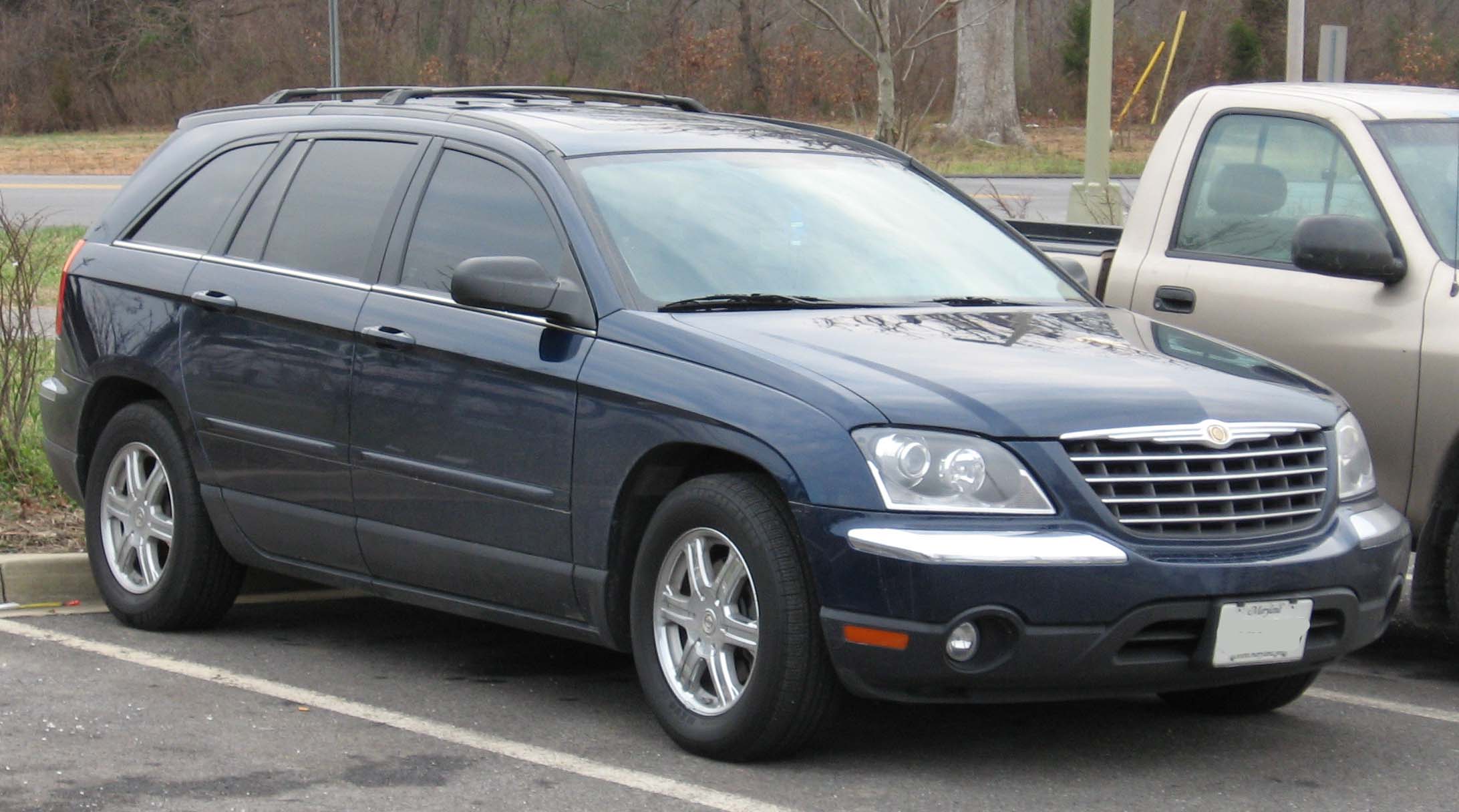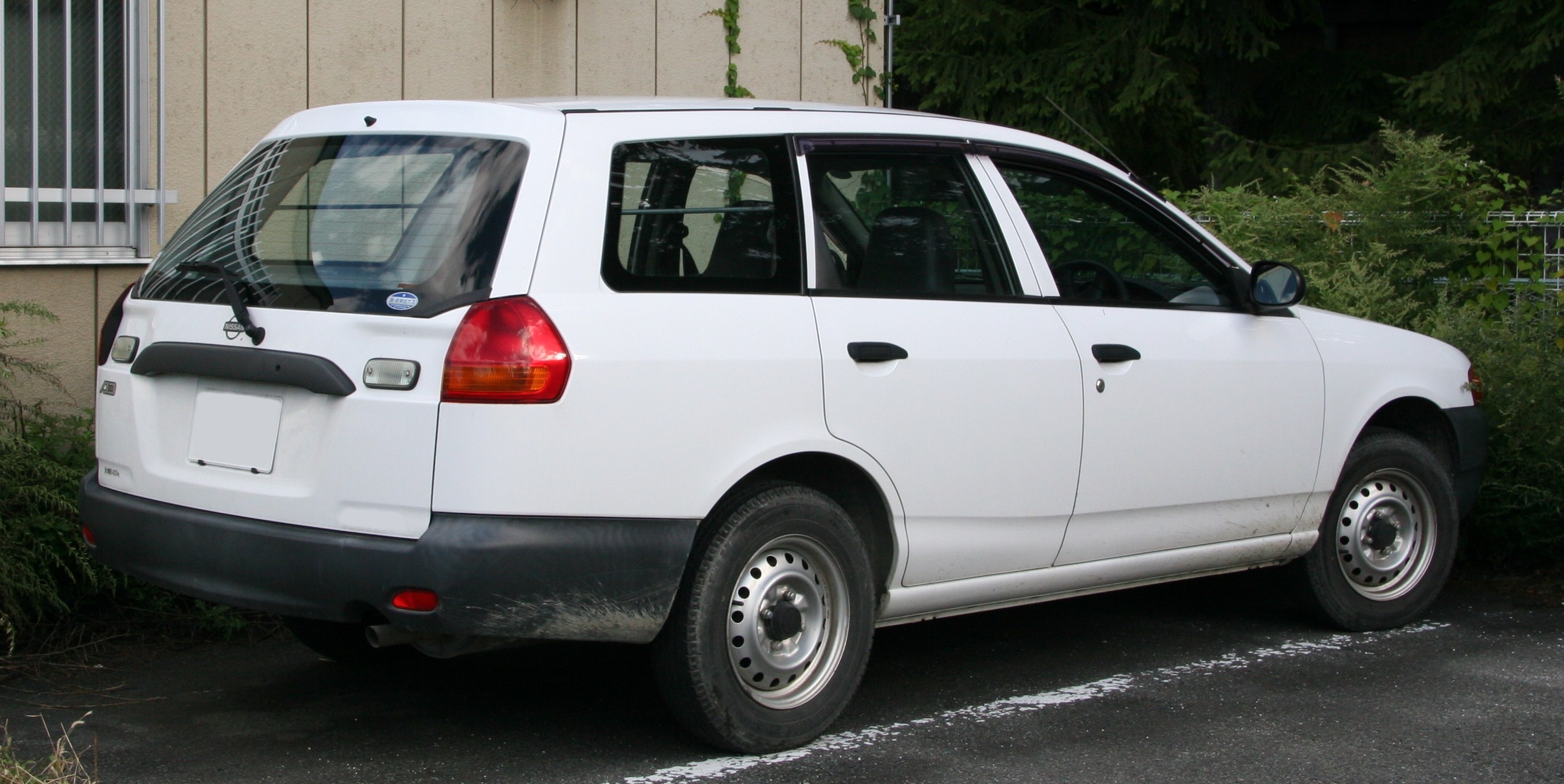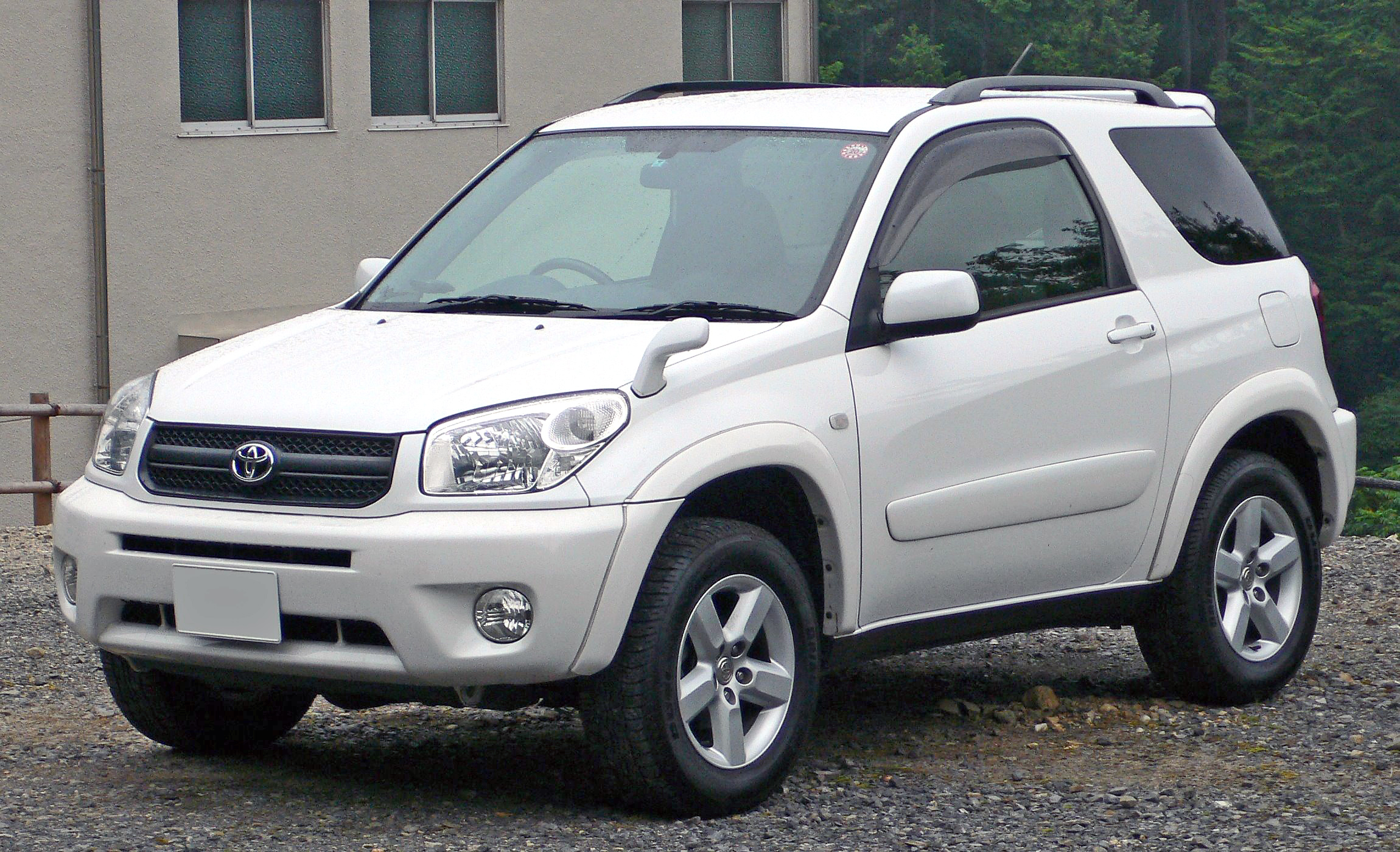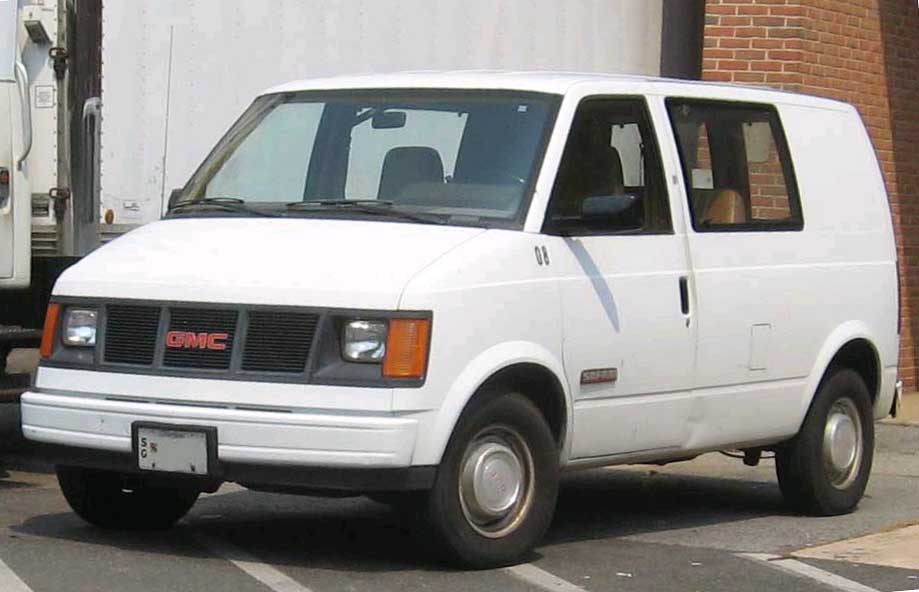|
Minivan
Minivan (sometimes called simply as van) is a North American car classification for vehicles designed to transport passengers in the rear seating row(s), with reconfigurable seats in two or three rows. The equivalent classification in Europe is MPV (multi purpose vehicle). Minivans often have a 'one-box' or 'two-box' body configuration, a higher roof, a flat floor, sliding doors for rear passengers, and high H-point seating. Minivan was also equivalent in Southeast Asia as the Asian Utility Vehicle (AUV). Compared with a full-size van, most minivans are based on a passenger car platform and have a lower body. Early models such as the Ford Aerostar and Chevrolet Astro utilized a compact pickup truck platform. The largest size of minivans is also referred to as 'Large MPV' and became popular following the introduction of the 1984 Dodge Caravan and Renault Espace. Typically, these have platforms derived from D-segment passenger cars or compact pickups. Since the 1990s, the ... [...More Info...] [...Related Items...] OR: [Wikipedia] [Google] [Baidu] |
Dodge Caravan
The Dodge Caravan (and the long-wheelbase Dodge Grand Caravan) is a series of minivans that was manufactured by Chrysler from the 1984 to 2020 model years. The Dodge version of the Chrysler minivans, the Caravan was marketed as both a passenger van and a cargo van (the only version of the model line offered in the latter configuration). For 1987, a long-wheelbase Dodge Grand Caravan was introduced (becoming the sole version of the model line from 2008 onward). Produced in five generations across 36 model years, Dodge Caravan is the second longest-lived Dodge nameplate (exceeded only by the Dodge Charger). Initially marketed as the Dodge counterpart of the Plymouth Voyager, the Caravan was later slotted between the Voyager and the Chrysler Town & Country, eventually serving as the lowest-price Chrysler minivan, slotted below the Chrysler Pacifica. Sold primarily in the United States and Canada, the Dodge Caravan was also marketed in Europe and other international markets under t ... [...More Info...] [...Related Items...] OR: [Wikipedia] [Google] [Baidu] |
Chrysler Minivans
The Chrysler minivans are a series of minivans that have been produced and marketed by the American automaker Chrysler since the 1984 model year. Currently in its sixth generation, the model line is marketed worldwide, primarily in North America and Europe. Introduced as the Dodge Caravan and Plymouth Voyager, the Chrysler minivans have been marketed under a variety of nameplates under the Chrysler, Plymouth, Dodge, and Ram brands; through the use of rebadging, the model line has also been marketed under the Lancia and Volkswagen brands. The introduction of the Chrysler minivans popularized the body styles by automakers in North America, leading to the introduction of competitive vehicles such as the Chevrolet Astro/GMC Safari, Ford Aerostar, Toyota Previa, and Mazda MPV. During the 1990s, the popularity of the model line led to its form factor becoming closely adopted by many of its competitors, leading to the Ford Windstar/Freestar, Honda Odyssey, Toyota Sienna, Kia Sed ... [...More Info...] [...Related Items...] OR: [Wikipedia] [Google] [Baidu] |
Chevrolet Lumina APV
The Chevrolet Lumina APV is a minivan that was produced by the Chevrolet division of General Motors. The first front-wheel drive minivan sold by Chevrolet, the Lumina APV was sold in a single generation from the 1990 to 1996 model years. Marketed alongside the Pontiac Trans Sport and Oldsmobile Silhouette, the Lumina APV competed against the Dodge Grand Caravan/Plymouth Grand Voyager, the extended-length Ford Aerostar, and the Mazda MPV. Introduced a year before the second-generation Chrysler minivans, the Lumina APV was the first American-market minivan to adopt the form factor of the Dodge Caravan and Plymouth Voyager. Though manufactured on a model-specific chassis, the Lumina APV was front-wheel drive, deriving its powertrain from GM sedans. In terms of size, the Lumina APV was slotted between the Chevrolet Astro and full-size Chevrolet Van. During its production, the Lumina APV and its Pontiac and Oldsmobile counterparts were assembled at the North Tarrytown Assem ... [...More Info...] [...Related Items...] OR: [Wikipedia] [Google] [Baidu] |
Car Classification
Governments and private organizations have developed car classification schemes that are used for various purposes including regulation, description, and categorization of cars. The International Standard ISO 3833-1977 ''Road vehicles – Types – Terms and definitions'' also defines terms for classifying cars. Summary of classifications The following table summarises the commonly used terms of market segments and legal classifications. Market segments Microcar / kei car Microcars and their Japanese equivalent— kei cars— are the smallest category of automobile. Microcars straddle the boundary between car and motorbike, and are often covered by separate regulations to normal cars, resulting in relaxed requirements for registration and licensing. Engine size is often or less, and microcars have three or four wheels. Microcars are most popular in Europe, where they originated following World War II. The predecessors to micro cars are voiturettes and cycle car ... [...More Info...] [...Related Items...] OR: [Wikipedia] [Google] [Baidu] |
Renault Espace
The Renault Espace is a five-door car manufactured by the French carmaker Renault since 1984 for five generations. It is classified as a large Multi-purpose vehicle, MPV/Minivan#Europe, minivan within the M-segment. The first three generations of the Espace were amongst the first contemporary minivans or MPVs, and were manufactured by Matra for Renault. The fourth generation, also an MPV, was manufactured by Renault. The Renault Grand Espace is a long wheelbase (LWB) version with increased rear leg room and boot size. The fifth generation is introduced with a Crossover (automobile), crossover SUV-inspired styling while keeping the space-oriented MPV body style. Renault described the fifth generation Espace as a 'crossover-style MPV' which combines elements of saloon, SUV and MPV, while retaining interior space and practicality of the latter. The name "wikt:espace, espace" means "space" in French. In February 2012, the Espace was retired in the United Kingdom, as part of a cost-c ... [...More Info...] [...Related Items...] OR: [Wikipedia] [Google] [Baidu] |
Full-size Van
A van is a type of road vehicle used for transporting goods or people. Depending on the type of van, it can be bigger or smaller than a pickup truck and SUV, and bigger than a common car. There is some varying in the scope of the word across the different English-speaking countries. The smallest vans, microvans, are used for transporting either goods or people in tiny quantities. Mini MPVs, compact MPVs, and MPVs are all small vans usually used for transporting people in small quantities. Larger vans with passenger seats are used for institutional purposes, such as transporting students. Larger vans with only front seats are often used for business purposes, to carry goods and equipment. Specially-equipped vans are used by television stations as mobile studios. Postal services and courier companies use large step vans to deliver packages. Word origin and usage Van meaning a type of vehicle arose as a contraction of the word caravan. The earliest records of a van as a vehicle ... [...More Info...] [...Related Items...] OR: [Wikipedia] [Google] [Baidu] |
Car Platform
A car platform is a shared set of common design, engineering, and production efforts, as well as major components, over a number of outwardly distinct models and even types of cars, often from different, but somewhat related, marques. It is practiced in the automotive industry to reduce the costs associated with the development of products by basing those products on a smaller number of platforms. This further allows companies to create distinct models from a design perspective on similar underpinnings. A car platform is not to be confused with a platform chassis, although such a chassis can be part of an automobile’s design platform, as noted below. Definition and benefits A basic definition of a platform in cars, from a technical point of view, includes: underbody and suspensions (with axles) — where the underbody is made of front floor, Rearfloor, engine compartment and frame (reinforcement of underbody). Key mechanical components that define an automobile platform inclu ... [...More Info...] [...Related Items...] OR: [Wikipedia] [Google] [Baidu] |
Ford Aerostar
The Ford Aerostar is a range of vans that was manufactured by Ford from the 1986 to the 1997 model years. The first minivan produced by Ford, the model line was marketed against the Chevrolet Astro/GMC Safari and the first two generations of the Chrysler minivans. Introduced shortly before the Ford Taurus, the Aerostar derived its name from its slope-nosed "one-box" exterior (although over six feet tall, the body of the Aerostar retained a , besting the Lincoln Mark VII). The first minivan powered exclusively by V6 engines, the Aerostar was also one of the first vehicles to introduce all-wheel drive to the segment in North America. The model line was sold in multiple configurations, including passenger and cargo vans, along with an extended-length body. Sold primarily in the United States and Canada, a limited number of vehicles were exported outside of North America. The Aerostar was replaced for the 1995 model year by the front-wheel drive Ford Windstar; Ford sold both mode ... [...More Info...] [...Related Items...] OR: [Wikipedia] [Google] [Baidu] |
Crossover SUV
A crossover, crossover SUV, or crossover utility vehicle (CUV) is a type of automobile with an increased ride height that is built on unibody chassis construction shared with passenger cars, as opposed to traditional sport utility vehicles (SUV) which are built on a body-on-frame chassis construction similar to pickup trucks. A term that originated from North America, the term crossover was initially used for any vehicle that blends characteristics between two different kinds of vehicles while, over time, crossover mostly refers to unibody-based SUVs. Crossovers are also described as "car-like SUVs" or "car-based SUVs". The term SUV is often used as an umbrella term for both crossovers and traditional SUVs due to the similarities between them. Compared to traditional SUVs, crossovers are known to be less capable of use in off-road conditions or hauling heavy loads, while instead offering other advantages such as superior fuel economy and handling. Compared to traditional ... [...More Info...] [...Related Items...] OR: [Wikipedia] [Google] [Baidu] |
Chevrolet Astro
The Chevrolet Astro is a van that was manufactured and marketed by the Chevrolet division of American auto manufacturer General Motors from 1985 to 2005. Sold alongside the GMC Safari, the Astro was marketed in multiple configurations, including passenger minivan and cargo van. The Astro and Safari are GM M-body vehicles, using a rear-wheel drive chassis; all-wheel drive became an option in 1990. For its entire production, the Astro and Safari were produced by Baltimore Assembly in Baltimore, Maryland; the vans would be the final model line produced by the facility. In total, approximately 3.2 million Astros and Safaris were produced from 1985 to 2005. Background The Astro and Safari were introduced for 1985 as the first minivan from General Motors. While marketed as a response to the first-generation Chrysler minivans, GM selected a rear-wheel drive layout, sizing the Astro and Safari closely to the short-wheelbase Chevrolet G10 van. Similar to the Ford Aerostar, to r ... [...More Info...] [...Related Items...] OR: [Wikipedia] [Google] [Baidu] |
Stout Scarab
The Stout Scarab is a streamlined 1930–1940s American car, designed by William Bushnell Stout and manufactured by Stout Engineering Laboratories and later by Stout Motor Car Company of Detroit, Michigan. The Stout Scarab is credited by some as the world's first production minivan, and a 1946 experimental prototype of the Scarab became the world's first car with a fiberglass bodyshell and air suspension. Background William B. Stout was a motorcar and aviation engineer and journalist. While he was president of the Society of Automotive Engineers, Stout met Buckminster Fuller at a major New York auto show and wrote an article on the Dymaxion Car for the society newsletter. Contemporary production cars commonly had a separate chassis and body with a long hood. The engine compartment and engine were located longitudinally behind the front axle, and ahead of the passenger compartment. The front-mounted engine typically drove the rear axle through a connecting drive sh ... [...More Info...] [...Related Items...] OR: [Wikipedia] [Google] [Baidu] |
DKW Schnellaster
The DKW Schnellaster, also known as the DKW F89 L, was a van produced by DKW from 1949 to 1962. Alongside the DKW F89 passenger car, it was the first vehicle to be manufactured by the new Auto Union conglomerate in Ingolstadt following the re-establishment of the business in West Germany. The model name ''Schnellaster'' translates from German to English as ''Rapid Transporter.'' Design The Schnellaster is of a one box or ''monospace'' configuration featuring front wheels set forward in the passenger cabin, a short sloping aerodynamic hood, front wheel drive, transverse engine (early, two cylinder models only), flat load floor throughout with flexible seating and cargo accommodations. These same features make the ''Schnellaster'' a precursor of the modern minivan, a body configuration subsequently popularized in notable examples such as the Renault Espace, or the Chrysler Voyager/Dodge Caravan and, mechanically, of the BMC Mini plus most modern cars. The van included a trai ... [...More Info...] [...Related Items...] OR: [Wikipedia] [Google] [Baidu] |

.jpg)






.jpg)


